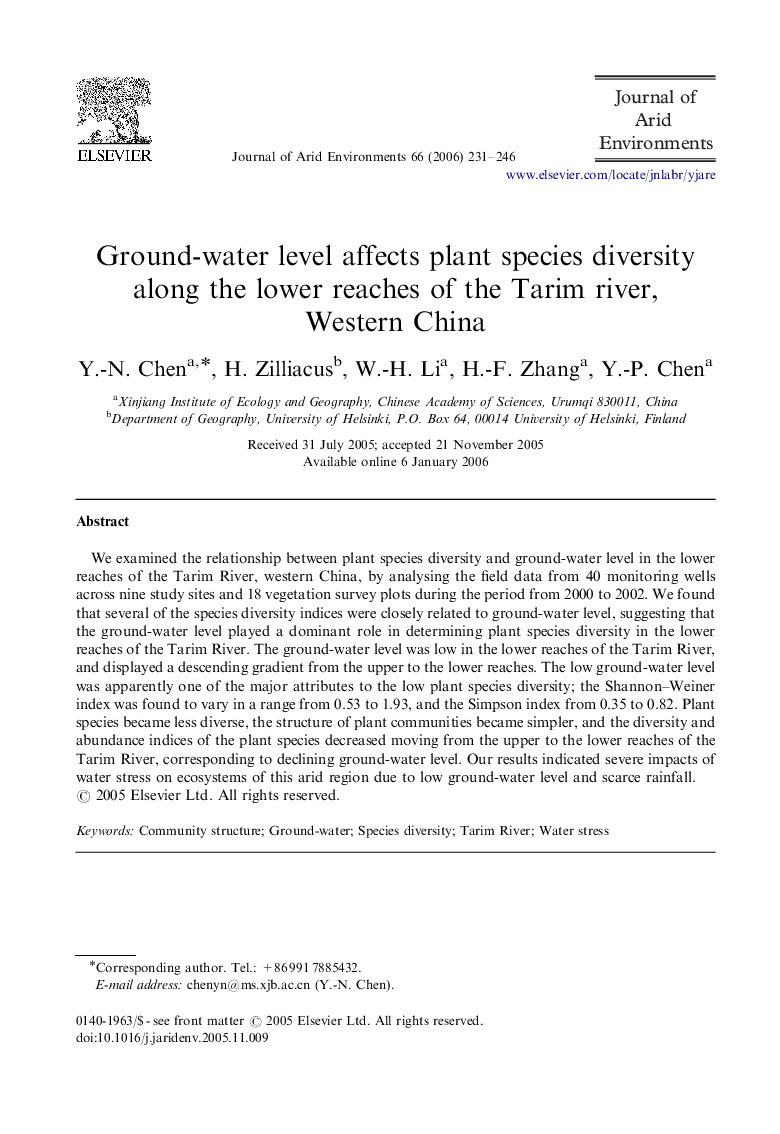| کد مقاله | کد نشریه | سال انتشار | مقاله انگلیسی | نسخه تمام متن |
|---|---|---|---|---|
| 4394750 | 1305555 | 2006 | 16 صفحه PDF | دانلود رایگان |

We examined the relationship between plant species diversity and ground-water level in the lower reaches of the Tarim River, western China, by analysing the field data from 40 monitoring wells across nine study sites and 18 vegetation survey plots during the period from 2000 to 2002. We found that several of the species diversity indices were closely related to ground-water level, suggesting that the ground-water level played a dominant role in determining plant species diversity in the lower reaches of the Tarim River. The ground-water level was low in the lower reaches of the Tarim River, and displayed a descending gradient from the upper to the lower reaches. The low ground-water level was apparently one of the major attributes to the low plant species diversity; the Shannon–Weiner index was found to vary in a range from 0.53 to 1.93, and the Simpson index from 0.35 to 0.82. Plant species became less diverse, the structure of plant communities became simpler, and the diversity and abundance indices of the plant species decreased moving from the upper to the lower reaches of the Tarim River, corresponding to declining ground-water level. Our results indicated severe impacts of water stress on ecosystems of this arid region due to low ground-water level and scarce rainfall.
Journal: Journal of Arid Environments - Volume 66, Issue 2, July 2006, Pages 231–246